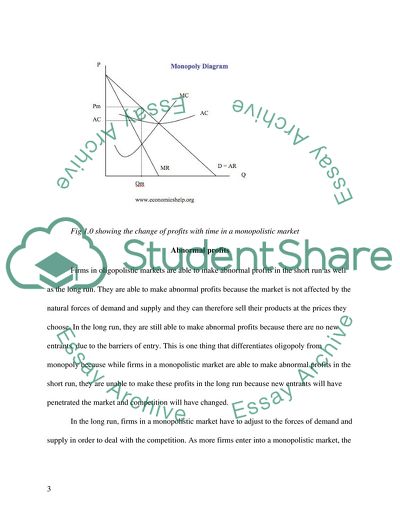Cite this document
(“What are the main differences between Monopolistic competition and Essay”, n.d.)
What are the main differences between Monopolistic competition and Essay. Retrieved from https://studentshare.org/miscellaneous/1618497-what-are-the-main-differences-between-monopolistic-competition-and-oligopoly-market-structureswhich-of-these-market-structures-best-serves-the-interests-of-the-consumer-and-why-use-diagrams-to-support-and-and-illustrate-your-answer
What are the main differences between Monopolistic competition and Essay. Retrieved from https://studentshare.org/miscellaneous/1618497-what-are-the-main-differences-between-monopolistic-competition-and-oligopoly-market-structureswhich-of-these-market-structures-best-serves-the-interests-of-the-consumer-and-why-use-diagrams-to-support-and-and-illustrate-your-answer
(What Are the Main Differences Between Monopolistic Competition and Essay)
What Are the Main Differences Between Monopolistic Competition and Essay. https://studentshare.org/miscellaneous/1618497-what-are-the-main-differences-between-monopolistic-competition-and-oligopoly-market-structureswhich-of-these-market-structures-best-serves-the-interests-of-the-consumer-and-why-use-diagrams-to-support-and-and-illustrate-your-answer.
What Are the Main Differences Between Monopolistic Competition and Essay. https://studentshare.org/miscellaneous/1618497-what-are-the-main-differences-between-monopolistic-competition-and-oligopoly-market-structureswhich-of-these-market-structures-best-serves-the-interests-of-the-consumer-and-why-use-diagrams-to-support-and-and-illustrate-your-answer.
“What Are the Main Differences Between Monopolistic Competition and Essay”, n.d. https://studentshare.org/miscellaneous/1618497-what-are-the-main-differences-between-monopolistic-competition-and-oligopoly-market-structureswhich-of-these-market-structures-best-serves-the-interests-of-the-consumer-and-why-use-diagrams-to-support-and-and-illustrate-your-answer.


